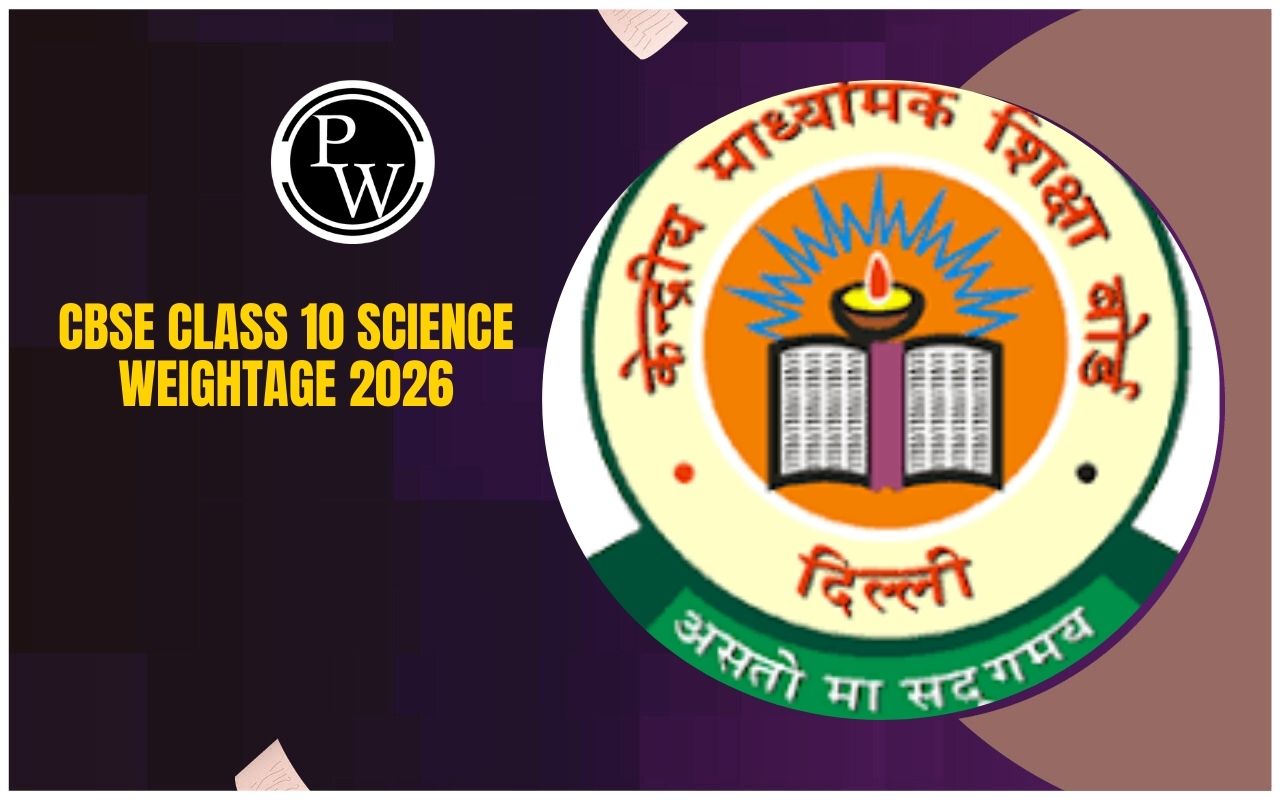

NCERT Solutions for Class 10 Science Chapter 15: NCERT Solutions for Class 10 Science Chapter 15 Our Environment provides a detailed understanding of environmental concepts. This chapter explores the intricate balance of ecosystems the impact of human activities on natural resources, and the importance of sustainable practices.
The solutions cover topics such as the food chain, ecological pyramids, and environmental issues like pollution and resource depletion. They provide clear explanations and detailed answers to questions on how organisms interact within their environments and the measures needed to protect and conserve our natural world. For students these solutions are a valuable resource for mastering the content and applying environmental science principles effectively.NCERT Solutions for Class 10 Science Chapter 15 Our Environment Overview
The NCERT Solutions for Class 10 Science Chapter 15 Our Environment are prepared by subject experts of Physics Wallah to provide a thorough understanding of environmental science. These solutions provide detailed explanations of key concepts such as ecosystems, food chains, and environmental issues. The expert preparation ensures that students grasp the intricacies of how living organisms interact with their surroundings and the impact of human activities on the environment. By using these solutions, students can effectively tackle complex questions and gain a solid foundation in environmental studies.NCERT Solutions for Class 10 Science Chapter 15 PDF Download
The PDF link for the NCERT Solutions for Class 10 Science Chapter 15 Our Environment is available below. This PDF provides detailed solutions and explanations to help students understand the concepts related to environmental science more effectively. By accessing this PDF, students can enhance their grasp of the chapter’s content and prepare thoroughly for their exams.NCERT Solutions for Class 10 Science Chapter 15 Our Environment PDF
NCERT Solutions for Class 10 Science Chapter 15 Our Environment
Here, we have provided NCERT Solutions for Class 10 Science Chapter 15 to help students prepare more effectively for their exams.NCERT Solutions for Class 10 Science Chapter 15 Page: 260
Q1. What are the trophic levels? Give an example of a food chain and state the different trophic levels in it.
Solution: Trophic levels are the different stages in a food chain through which energy is transferred. Each level represents a step in the flow of energy from producers to various consumers.Example of a Food Chain:
Grass → Goat → Man
In this food chain:- Grass represents the first trophic level (producers) as it produces energy through photosynthesis.
- Goat represents the second trophic level (primary consumers) as it eats the grass to obtain energy.
- Man represents the third trophic level (secondary consumers) as he consumes the goat to gain energy.
Q2. What is the role of decomposers in the ecosystem?
Solution: Decomposers play a crucial role in the ecosystem by performing the following functions:Environmental Cleansing: They break down dead plants and animals, which helps in cleaning the environment and preventing the accumulation of organic waste.
Nutrient Recycling: By decomposing organic matter, decomposers release essential nutrients back into the soil, which are then used by plants and other producers, facilitating nutrient recycling.
Space Creation: Their activity helps in making space for new organisms in the ecosystem by breaking down and recycling dead matter.
Element Replenishment: Decomposers return various elements like carbon, nitrogen, and phosphorus to the soil, water, and air, ensuring that these elements are available for reuse by producers such as crop plants.
NCERT Solutions for Class 10 Science Chapter 15 Page: 262
Q1. Why are some substances biodegradable and some non-biodegradable?
Solution: Substances are categorized as biodegradable or non-biodegradable based on their ability to be broken down by natural processes:Biodegradable Substances: These are materials that can be decomposed by microorganisms, such as bacteria and fungi. Natural products like paper, food scraps, and wood fall into this category. Microorganisms can break these substances down into simpler compounds, which are then recycled back into the environment.
Non-Biodegradable Substances: These are materials that cannot be easily broken down by natural processes. Human-made products like plastics, metals, and synthetic chemicals do not decompose easily because they lack the necessary chemical structures that microorganisms can break down. As a result, non-biodegradable substances persist in the environment for long periods, contributing to pollution and environmental harm.
Q2. Give any two ways in which biodegradable substances would affect the environment.
Solution: Biodegradable substances can affect the environment in the following ways:Environmental Cleaning: Biodegradable substances decompose naturally and are broken down into simpler compounds by microorganisms. This process helps keep the environment clean by reducing the accumulation of waste. As these substances break down, they do not contribute to long-term pollution or littering.
Nutrient Recycling: The decomposition of biodegradable substances contributes to the nutrient cycle. Decomposers break down these materials into essential nutrients, which are then released back into the soil, water, and air. This process enriches the soil, promoting plant growth and maintaining ecological balance.
Q3. Give any two ways in which non-biodegradable substances would affect the environment.
Solution: Non-biodegradable substances can affect the environment in the following ways:Pollution: Non-biodegradable substances, such as plastics and chemicals, persist in the environment for long periods. They contribute to pollution in the air, soil, and water. These materials can release harmful toxins and contaminants, negatively impacting ecosystems, wildlife, and human health.
Bio-magnification: Non-biodegradable substances can accumulate in the food chain through a process known as bio-magnification. As these substances move up the food chain, their concentration increases, potentially reaching toxic levels in top predators, including humans. This can lead to serious health issues and disrupt ecological balance.
NCERT Solutions for Class 10 Science Chapter 15 Page: 264
Q1. What is ozone, and how does it affect the ecosystem?
Solution: Ozone is a molecule composed of three oxygen atoms (O₃) and plays a crucial role in the Earth's atmosphere. It is primarily found in the stratosphere, where it forms the ozone layer. The ozone layer acts as a protective shield by absorbing and filtering out the majority of the Sun's harmful ultraviolet (UV) radiation. This protection is essential for maintaining the health of ecosystems and living organisms.Here's how ozone affects the ecosystem:
Protection from UV Radiation: By absorbing UV rays, the ozone layer prevents excessive ultraviolet radiation from reaching the Earth's surface. This helps protect living organisms, including plants, animals, and humans, from the harmful effects of UV radiation, such as skin cancer, cataracts, and damage to DNA.
Preservation of Ecosystems: UV radiation can adversely affect marine and terrestrial ecosystems. For instance, high levels of UV radiation can harm phytoplankton, which forms the basis of aquatic food chains. This can disrupt marine ecosystems and affect fish populations. On land, UV radiation can damage crops and forests, impacting food production and biodiversity.
Q2. How can you help in reducing the problem of waste disposal? Give any two methods.
Solution: To help reduce the problem of waste disposal, consider the following methods:Adopting the 3 Rs (Reduce, Reuse, Recycle):
- Reduce: Minimize waste generation by opting for products with less packaging and avoiding single-use items. For instance, use reusable shopping bags and containers instead of disposable ones.
- Reuse: Repurpose items rather than discarding them. For example, glass jars can be used for storage, and old clothes can be turned into cleaning rags or craft projects.
- Recycle: Properly separate recyclable materials such as paper, plastic, glass, and metal. Ensure they are placed in designated recycling bins so they can be processed and reused.
Composting Biodegradable Waste:
- Preparation of Compost: Convert biodegradable waste, like fruit and vegetable scraps, coffee grounds, and garden waste, into compost. This can be done using a compost bin or pile. Composting helps reduce the volume of waste sent to landfills and provides nutrient-rich soil for gardening, thereby supporting a circular waste management system.
NCERT Solutions for Class 10 Science Chapter 15 Page: 264
Q1. Which of the following groups contain only biodegradable items?
a. Grass, flowers and leather
b. Grass, wood and plastic
c. Fruit peels, cake and lime juice
d. Cake, wood and grass
Solution:c) Fruit peels, cake, and lime juice
These items are all biodegradable as they decompose naturally with the help of microorganisms.- Grass, flowers, and leather : While grass and flowers are biodegradable, leather is generally not considered biodegradable due to the chemicals used in its processing.
- Grass, wood, and plastic : Grass and wood are biodegradable, but plastic is non-biodegradable.
- Fruit peels, cake, and lime juice : All these items are biodegradable as they decompose naturally.
- Cake, wood, and grass : Cake and grass are biodegradable, but wood's biodegradability can vary depending on treatment and conditions.
Q2. Which of the following constitutes a food chain?
a. Grass, wheat and mango
b. Grass, goat and human
c. Goat, cow and elephant
d. Grass, fish and goat
Solution:b. Grass, goat, and human
In this food chain:- Grass represents the producer, which synthesizes its own food through photosynthesis.
- Goat is the primary consumer that feeds on the grass.
- Human is the secondary consumer that consumes the goat.
Q3. Which of the following are environment-friendly practices?
a. Carrying cloth bags to put purchases in while shopping
b. Switching off unnecessary lights and fans
c. Walking to school instead of getting your mother to drop you on her scooter
d. All of the above
Solution: d) All of the aboveQ4. What will happen if we kill all the organisms at one trophic level?
Solution: If all the organisms at one trophic level are removed, several consequences can occur:Disruption of the Food Chain : The organisms in the trophic levels above will lose their primary food source, leading to starvation and a decline in their population. This disruption can cause a cascade effect, impacting the entire food chain.
Imbalance in Ecosystem : The absence of organisms at one trophic level can lead to overpopulation of the organisms at the lower trophic level, as they have no natural predators. This imbalance can cause excessive growth or depletion of certain species, further affecting other organisms and resources in the ecosystem.
Ecosystem Instability : The loss of one trophic level can destabilize the ecosystem, leading to changes in species composition, loss of biodiversity, and the potential collapse of the ecosystem's structure and function.
Q5. Will the impact of removing all the organisms in the trophic level be different for different trophic levels? Can the organisms of any trophic level be removed without causing any damage to the ecosystem?
Solution: Yes, the impact of removing all the organisms in a trophic level will indeed differ depending on which level is removed:Producers : Removing all producers (such as plants and algae) would have the most severe impact, as they form the base of the food chain. Without producers, primary consumers (herbivores) would have no food source, leading to their extinction. This, in turn, would affect secondary and tertiary consumers, causing widespread disruption and potential collapse of the ecosystem.
Primary Consumers : If all primary consumers (herbivores) are removed, the producers would experience overgrowth due to the lack of grazing. Secondary consumers (carnivores) that rely on primary consumers for food would face starvation, leading to their decline. This would disrupt the food chain and affect the stability of the ecosystem.
Secondary Consumers : Removing all secondary consumers (carnivores) would lead to an increase in the population of primary consumers, which can cause overgrazing and depletion of producers. This imbalance would also affect tertiary consumers and other parts of the ecosystem.
Tertiary Consumers : Removing tertiary consumers (top predators) might lead to an increase in secondary consumers, which could result in a decline of primary consumers due to overpronation. This imbalance can cause cascading effects throughout the ecosystem.
Q6. What is biological magnification? Will the levels of this magnification be different at different levels of the ecosystem?
Solution:Biological magnification (or biomagnification) refers to the process by which the concentration of non-biodegradable substances, such as toxins or pollutants, increases as they move up the food chain. These substances accumulate in the bodies of organisms and become more concentrated at each successive trophic level.
Here’s how it works:
Primary Producers : Non-biodegradable substances enter the ecosystem through producers (e.g., plants or algae) from the environment (soil, water). These substances are taken up by the producers.
Primary Consumers : Herbivores consume the producers and ingest the toxins. Since the herbivores consume a large quantity of producers, the concentration of toxins in their bodies increases compared to the producers.
Secondary Consumers : Carnivores that eat the herbivores accumulate these toxins in even higher concentrations because they consume many herbivores over their lifetime.
Tertiary Consumers : Top predators, which are at the top of the food chain, accumulate the highest concentrations of toxins, as they are at the highest trophic level and consume many organisms from the lower levels.
Levels of Magnification :
Different Levels : Yes, the levels of magnification will be different at various levels of the ecosystem. Each trophic level shows a higher concentration of toxins compared to the level below it. For instance, while primary producers might have a low concentration of toxins, secondary and tertiary consumers will have progressively higher concentrations.
Effect on Ecosystems : The higher the trophic level, the greater the concentration of the toxins, which can lead to harmful effects on top predators, including reproductive failures, health issues, and even death. This magnification can cause significant ecological damage and impact the health of the entire ecosystem.
Q7. What are the problems caused by the non-biodegradable wastes that we generate?
Solution: Non-biodegradable wastes, which are substances that cannot be broken down by natural processes or microorganisms, pose several significant problems:Persistence in the Environment : Non-biodegradable substances, such as plastics, metals, and synthetic chemicals, do not decompose naturally. This means they persist in the environment for long periods, leading to accumulation and pollution.
Waste Management Challenges : The increasing volume of non-biodegradable waste strains waste management systems. Dumping and disposal become challenging, as these materials occupy landfill space and require special treatment to manage.
Food Chain Contamination : Non-biodegradable wastes, particularly heavy metals and toxic chemicals, can enter the food chain. As these substances accumulate in organisms at various trophic levels, they can lead to bio-magnification, impacting the health of animals and humans.
Soil and Water Pollution : Non-biodegradable wastes can leach into groundwater, contaminating water sources. This can lead to soil infertility, alter soil pH, and affect plant growth. Contaminated water sources can further impact human health and ecosystems.
Q8. If all the waste we generate is biodegradable, will this have no impact on the environment?
Solution: Even if all the waste generated is biodegradable, it can still have significant environmental impacts:Decomposition Odors : The decomposition of biodegradable wastes, while a natural process, can be slow and produce unpleasant odors. These smells can be harmful if inhaled by humans, potentially causing respiratory issues or other health problems.
Harmful Organisms : Dumping areas for biodegradable waste can become breeding grounds for harmful microorganisms and pests. These organisms can pose health risks to humans, plants, and animals, spreading diseases and disrupting ecosystems.
Oxygen Depletion : In aquatic environments, an excess of biodegradable waste can lead to eutrophication. As these wastes decompose, they consume oxygen in the water, which can reduce the oxygen available for aquatic life. This can lead to the death of fish and other aquatic organisms, disrupting the balance of the ecosystem.
Q9. Why is damage to the ozone layer a cause for concern? What steps are being taken to limit this damage?
Solution: Damage to the ozone layer is a significant cause for concern due to the following reasons:Increased UV Radiation : The ozone layer acts as Earth's shield against harmful ultraviolet (UV) rays from the sun. When this layer is damaged, more UV rays reach the Earth's surface, increasing the risk of skin cancer, eye cataracts, and other health problems in humans.
Harmful Effects on Ecosystems : Excessive UV radiation can disrupt ecosystems by affecting plant growth and photosynthesis. It can also damage aquatic ecosystems by harming plankton and other microorganisms that form the base of the food chain.
Disruption of Climate : Changes in UV radiation can impact weather patterns and climate systems, potentially leading to broader environmental and climatic issues.
To address and limit ozone layer damage, several steps have been taken:International Agreements : The most significant measure is the Montreal Protocol, an international treaty signed in 1987 aimed at phasing out the production and use of ozone-depleting substances like chlorofluorocarbons (CFCs). Many countries, both developed and developing, have committed to reducing and eliminating these substances.
Regulation and Monitoring : Governments and international organizations monitor the production, use, and emission of ozone-depleting chemicals. Regulations are in place to control and phase out these substances.
Alternative Chemicals : The development and adoption of alternative chemicals and technologies that do not harm the ozone layer are encouraged. For instance, substances that do not contribute to ozone depletion are being used in place of CFCs.
Public Awareness and Education : Efforts are made to raise awareness about the importance of protecting the ozone layer and the impact of individual actions, such as using products that are free of ozone-depleting chemicals.
Benefits of NCERT Solutions for Class 10 Science Chapter 15 Our Environment
- Clear Understanding : The solutions provide detailed explanations and step-by-step guidance to help students understand complex concepts related to ecosystems, biodiversity, and environmental issues.
- Structured Learning : The solutions follow the NCERT textbook, ensuring that students get answers that are aligned with their curriculum. This structured approach helps in systematic learning and better comprehension of the subject matter.
- Exam Preparation : With well-structured answers and explanations, these solutions are a valuable resource for exam preparation. They help students practice and master the types of questions they will encounter in their exams.
- Concept Reinforcement : The solutions help reinforce key concepts covered in the chapter, such as the role of decomposers, the significance of various environmental factors, and the impact of human activities on the environment.
NCERT Solutions for Class 10 Science Chapter 15 FAQs
What is the main focus of Chapter 15 "Our Environment"?
What are trophic levels, and why are they important?
How do decomposers contribute to the ecosystem?
What is biological magnification, and what are its effects?












